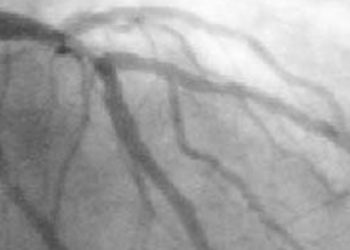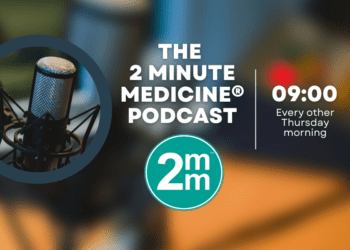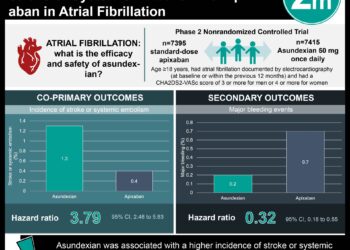Lower LDL associated with regression of pre-existing atherosclerotic lesions but not carotid plaque incidence
1. Targeting a lower LDL does not impact carotid plaque incidence but does increase the rate of regression of pre-existing atherosclerotic lesions among patients who have experienced an ischemic stroke.
Evidence Rating Level: 2 (Good)
Low-density lipoprotein (LDL) is a lipid molecule that has been implicated in the development of atherosclerotic lesions. The Treat Stroke to Target (TST) trial showed that a target LDL of <70 mg/dL compared to a target of 90 to 110 mg/dL reduced the risk of major cardiovascular events among patients who have experienced an ischemic stroke as a result of atherosclerotic cerebral vasculature. This nested, parallel study of the TST trial sought to explore whether targeting an LDL <70 mg/dL had a positive impact on carotid atherosclerosis progression. Carotid ultrasounds from 201 patients (M [SD] age = 67.2 [11.8] years, 66.2% male) with a target LDL of <70 mg/dL were compared to ultrasounds from 212 patients (M [SD] age = 67.5 [11.7] years, 66.5% male) with a target LDL of 90 to 110 mg/dL. The primary outcome was new plaque formation on the carotid bifurcation or the internal carotid artery; common carotid artery intima-media thickness (CCA-IMT) was measured as a secondary outcome. CCA-IMT has been recognized as a predictor of future cardiovascular and cerebrovascular events. Mean LDL was 64 mg/dL in the lower-target group and 106 mg/dL in the higher-target group. 46 of 201 patients (22.9%) in the lower-target group developed new carotid plaques, which did not differ significantly from the 45 of 212 patients (21.2%) in the higher-target group who also developed new carotid plaques (HR 1.03, 95% CI 0.68 to 1.56, p = 0.88). This finding was significant even after controlling for time since stroke, age, and sex. Conversely, CCA-IMT change among patients in the lower-target group was -10.53 μm/year (95% CI -14.21 to -6.85) while it was -2.69 μm/year (95% CI -6.55 to 1.18) among patients in the higher-target group (absolute difference -7.84 μm, 95% CI -13.18 to -2.51, p = 0.004). Again, the results remained significant after adjustment. Overall, this study showed that targeting a lower LDL among post-ischemic stroke patients does not affect the incidence of new carotid plaque formation but does impact the rate of regression of pre-existing atherosclerotic lesions as measured by CCA-IMT. These data lend further evidence to the benefit of titrating lipid-lowering drugs such as statins to target lower LDL levels among select patients.
Click to read the study in JAHA
Image: PD
©2020 2 Minute Medicine, Inc. All rights reserved. No works may be reproduced without expressed written consent from 2 Minute Medicine, Inc. Inquire about licensing here. No article should be construed as medical advice and is not intended as such by the authors or by 2 Minute Medicine, Inc.







